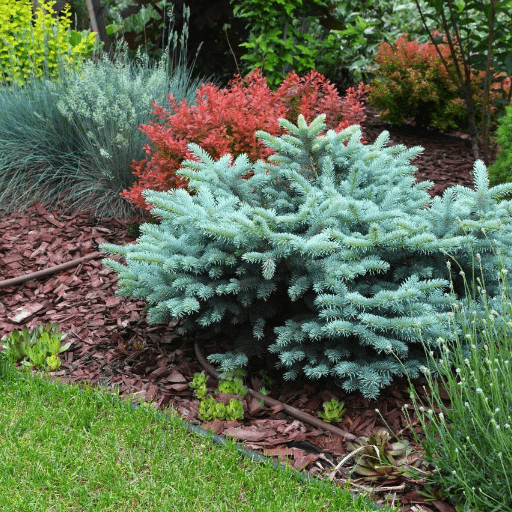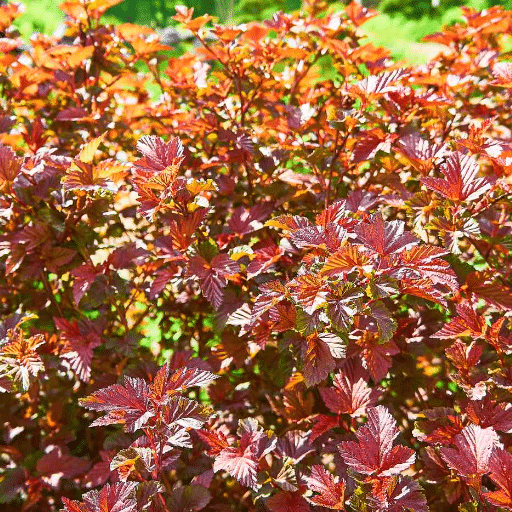Gardening enthusiasts often dream of lush, vibrant landscapes but may lack the time or energy to maintain demanding plants. That is exactly the role of low-maintenance shrubs! These hardy, adaptable plants will grow without intervention, an ideal situation for a busy gardener or a novice in gardening. This article lists some of the best shrubs thrive on neglect and introduces their major traits that can add a splash of color to your garden with very little effort on your part. Whether you need a shoot of green all year round, a sudden burst of color in the season, or plants that will survive on poor soils, these shrubs should be a delight to landscape with, but take up very little time on your side.
Introduction to Low-Maintenance Shrubs

Low-maintenance shrubs are the way to go for gardeners who want beauty without daily upkeep. These hardy plants thrive in all sorts of conditions with little watering, pruning, or fertilizing once established. Think of a boxwood or juniper for a bit of year-round structure, combined with spirea for some dramatic seasonal blooms. Consider hydrangeas or weigela if your soils are quite heavy or you have plenty of shaded areas. Pick the low-maintenance shrubs right for your space, and you can have a beautiful garden without much effort.
What Are Low-Maintenance Shrubs?
Low-maintenance shrubs are plants that require minimal care and attention to thrive, making them an excellent choice for busy gardeners or those new to gardening. These shrubs are typically hardy, adaptable to a variety of conditions, and need only occasional watering, pruning, or fertilizing. They are designed to provide beauty and structure to a garden without demanding constant upkeep, ensuring your outdoor space remains vibrant and appealing with ease.
Benefits of shrubs thrive on neglect
There are many practical and aesthetic advantages to choosing low-maintenance shrubs for your garden. They save time and reduce effort, which is just perfect for people with busy schedules or those with little gardening experience. They adapt well in various soil and weather conditions, making them able to fit and complement any landscape. On the other hand, since many require less water, they promote the idea of sustainable gardening and reduce the water bills. Their resilient nature also means they rarely offer a home to pests and diseases, thus significantly reducing the cases that will require harsh chemical treatments. Low-maintenance shrubs are thus a perfect answer to creating a dazzling and stress-free garden to finish off any outdoor space with minimal intervention.
Choosing the Right Shrubs for Your Garden
There are a few key things I do when choosing the right shrub for my garden to make sure it will thrive and look good in the space. First is to look at how much sun is in the garden-is it full on sun, a little bit of shade, or plenty of shade? I will then choose shrubs that can handle those conditions. I will then take into account the soil type and drainage, along with the climate, so that the plants can withstand local weather patterns. I will also consider the size and shape I want for the shrubs so that they will fit into the layout without over-crowding. Lastly, I will consider the overall feel of what I am going for and selected shrubs to enhance that feel and coincide with my idea of low maintenance.
Types of Low-Maintenance Shrubs

Maintenance-averse gardeners are looking for beautiful gardens with little effort. Some popular choices would be boxwood because of its versatility and ability to grow in various climates; hydrangeas, with their bright blooms distributed over a variety of soil types; junipers-they are great since they stay green all year long and can tolerate poor soil and drought conditions; and, basically, spirea, for its flowers and low maintenance, and butterfly bush, which requires the least upkeep and attracts pollinators with scented flowers. These shrubs can take care of themselves through most conditions, making them a fun and easy way to enhance any landscape.
Evergreen Shrubs: Year-Round Foliage
Evergreen shrubs are wonderful options for dazzling foliage-related things any time of the year in any garden or landscape. Their tenacity and versatility appeal to me because they adapt to varying climatic conditions with little maintenance. These shrubs provide the ever-present green and work well as privacy screens or wind barriers. My favorites include boxwoods and hollies due to their adaptability and structure, with the junipers being a wonderful option to bring in texture and layers with their interesting forms. No matter if you want to go green as a backdrop or use them for highlighting some spots, green shrubs will perfectly uplift any outdoor area.
Flowering Shrubs for Seasonal Color
Flowering shrubs are an efficient introduction of bright, seasonal colors into any garden. I, for one, suggest hydrangeas, with their big blooms and versatility, as they grow well under various soil conditions and ensure long-term flower display. Forsythias are a must-have for early spring with their neon-yellow blooms announcing the end of winter. Butterfly bushes hold color into summer, attracting pollinators of both kinds-both bees and butterflies-with clusters of lovely and fragrant flowers. When selecting flowering shrubs, consider your climatic conditions, soil type, and how much sunlight any area of your garden receives. This way, you will have a lively and charming landscape, easy to manage and full of seasonal color.
Fragrant Shrubs to Enhance Your Garden
When selecting fragrant shrubs for my garden, I first consider my local climate in order to make sure the plants will thrive in the conditions I can offer. These days I really take into account the soil type as well, either testing it in terms of pH and texture or simply observing how much sunlight an area receives throughout the day. This opens my options to shrubs like lilacs or gardenias for their rich and pleasant aromas and good colored blooms. Planning in this manner allows me to create a garden that is not only pleasing to the eyes but also easy to maintain and fragrant with pleasant scents.
Popular Shrubs Thrive on Neglect

When it comes to low-maintenance shrubs, a few options stand out for their ability to thrive with minimal care. Butterfly bush (Buddleia) is a popular choice, appreciated for its colorful blooms and ability to attract pollinators while requiring little pruning or watering. Similarly, the hardy nandina, often called heavenly bamboo, tolerates various soil types and thrives in sun or shade. Spirea is another resilient shrub, known for its profusion of flowers and adaptability to different climates. For evergreen appeal, junipers are a go-to option, offering structure and interest throughout the year. These shrubs are perfect for gardeners seeking beauty and ease, as they require only occasional upkeep to flourish.
Boxwood: The Classic Choice
Due to their boxy stems, boxwood shrubs have deservedly earned the title of the classic garden favorite. With their dense foliage, boxwoods were adored universally as hedges, borders, or just a sitting room in their own right. They grow best in well-drained soil; there is also somewhere between partial sun and full Sun, so a bit of environmental resistance, another attribute placed against hardy character. Boxwoods grow in their own ways, so trimming is usually required to preserve the classic shape and curb their overgrowth, but otherwise, they do well on their own. This shrub is deer resistant and climate tolerant, making it apt to adorn your garden always with structure and elegance. Literally, boxwoods are really an embodiment of beauty, utility, and ease.
Hibiscus: Bold and Beautiful
Large with a showy floral display, the hibiscus plant prefers sunny locations and well-drained soil. This beauty boasts huge flowers that make quite a statement and attract pollinators such as bees and butterflies. Watering regularly and fertilizing occasionally, I find are two ingredients of keeping the plant flowers well all through the growing season. The flower is somewhat frost-sensitive, with carry the pots grown hibiscus indoors or cover the outdoor ones to withstand the cooler climes. With proper care, this is a wonderful introduction of charming tropicalism and a riot of color in any outdoor setting.
Ninebark: A Hardy Native Shrub
Nagibark is a hardy, versatile native shrub that thrives in a host of conditions, making it a favorite among gardeners seeking low-maintenance. I wonder how useful it is because it adapts to varying soil conditions and tolerates drought; hunky in the Sun and partial shade. It blooms with lovely clusters of white or pink flowers in late spring, silky decorative seed pods, and bark that exfoliates attractively for year-round delight. It is easy to cut back, re: cutting away of older stems encourages shape and good growth. Nagibark is also deer resistant and aids pollinators. In my experience, and according to some very reliable sources, this shrub is splendid for effortless textural and color contrasts in landscapes.
Perennials That Thrive Alongside Shrubs

It is important to select roses, shrubs, and perennials that prosper in similar conditions and complement each other so that the whole installation looks appealing. Coneflowers, black-eyed Susans, and daylilies give brilliant color in full sun, while hostas, astilbes, and ferns provide greenery and texture in the shade. Choose perennials with successive blooming times applying staggered bloom times for continuous color through the growing season. Also, think about including species that are native to help pollinators and would sustain a low-maintenance, friendly environment. Pairing perennials with shrubs creates layers in the garden which gives a feeling of depth and interest all year round.
Companion Planting with Perennials
By companion planting with perennials, I can create a thriving and balanced ecosystem in my garden. When I pair plants, I look at complementary ways they grow and use resources. For instance, I usually plant tall perennials, such as coneflowers or sunflowers, alongside shorter, shade-tolerant plants, such as creeping thyme or coral That way, all plants receive appropriate amounts of light. Moreover, I pair plants that repel pests or attract beneficial insect populations, like lavender, with roses to keep away aphids. Choosing perennials that have similar soil and watering needs reduces maintenance and allows the whole garden to flourish. By undertaking these companion planting efforts, I ensure biodiversity and make my garden a more dynamic and resilient space.
Creating a Balanced Garden with Low-Maintenance Plants
A balanced garden with low-maintenance plants is created, during which I will research hardy perennials that do well in my locale. I prioritize native plants as they are naturally adapted to the environment, demanding less water and care than non-natives. I also consider drought-tolerant types like the succulents or ornamental grasses–they require less watering and are sustainable in the long run. For the shady side, the plants will be hostas or ferns that grow well without sunlight.
Grouping plants, according to their needs for sun, soil, and water, is a great deal of what my approach entails. The result of this coordinated planting is that resources are minimized, and the plants’ living conditions are enhanced. Mulching is also a part of my approach; it will help retain moisture in the soil and suppress weeds, reducing the maintenance required. With all these in place, I end up having an exciting, balanced garden that still looks attractive with very little effort.
Examples of Perennials That Thrive
Some of the good examples of perennials that thrive include coneflowers, hostas, and black-eyed Susans. Coneflowers are hardy in nature and do well with full sun exposure. They attract pollinators like bees and butterflies. Hostas, in contrast, are best used for shady areas with lush foliage that gives texture to any garden. Black-eyed Susans are easy to maintain and bloom brightly in sunny spots casting the landscape with a splash of color. With the selection of the hardy plants that are so adaptable, the garden remains strong and visually attractive all year round.
Tips for Maintaining a Low-Maintenance Garden

It truly kicks off with selecting native or drought-resistant types of plants that will prosper in your area so that they don’t require incessant watering or care. Then comes mulching, which keeps soil moist, lessens weed growth, or effectively upgrades soil condition. An ideal rule for establishment is to group plants according to how much water and sunlight they need so as to further minimize effort. Use perennials wherever possible; they remain installed year after another and lessen the need to replant. Another option is to present drip irrigation wherever you want it for watering, which works wonders, saving you time. Regular trimming and weeding will allow the planting to breathe and will prevent overgrowth so that its ease of maintenance is balanced with charm.
Watering and Fertilization Strategies
Watering and fertilization are almost always handled consistently and efficiently, maintaining a thriving garden. I water once or twice a week, depending on conditions, making sure water goes deep into the soil so the roots must grow deep. Most of the time, it’s early morning watering to avoid quick evaporation. Drip irrigation made a difference in this scenario by making sure water applies only to the roots where it’s sorely needed. Fertilizing-wise, I like to stay organic in controlling things—the compost, slow-release fertilizer—so it would work slowly over time instead of jamming nutrients into plants all at once. But reacting to seasonal changes is crucial: are the plants healthy? Are they getting the nutrients and hydration they require during all seasons?
Pruning Techniques for Neglected Shrubs
When dealing with neglected shrubs, one has to consider their overall health before making any cuts. First comes the removal of dead, diseased, and damaged branches. Usually, I thin and rejuvenate prune overgrown shrubs, which maximizes air circulation and brings about healthy new growth. I prune back the shoots to either a main stem or a bud, trying to follow the natural shape of the shrub to minimize stress to the plant. The timing of pruning is important too-those flowering in spring should be pruned right after flowering, and those flowering in summer should be pruned in late winter or early spring. If the shrub is really overgrown, spread the pruning over two or three growing seasons so as not to overly stress the plant. Patience and consistent care are keys to returning neglected shrubs to full glory.
Seasonal Care for Shrubs That Thrive on Neglect
Little seasonal care brings a significant impact on the growth and lifespan of the shrubs that thrive on neglect. In spring, I lightly inspect to remove any dead or damaged branches and check for pests. Summer is pretty easy-just make sure they are watered during long dry spells, but don’t overwater. Fall would be an ideal time to remove fallen leaves around their base to avoid diseases or pest problems and apply light mulch to the soil for protection during the winter. During winter, I watch for ice damage, trimming broken branches promptly to prevent further harm. By watching these seasonal tasks, I manage to keep these hardy shrubs healthy with minimum effort.
References
-
Martha Stewart: “8 Beautiful Shrubs That Thrive on Neglect” – This article lists shrubs like Ninebark, Barberry, and Spirea, which are known for their low-maintenance nature.
-
Epic Gardening: “25 Low-Maintenance Shrubs That Thrive on Neglect” – This source highlights shrubs like Azaleas and their minimal care requirements.
-
Gardenista: “5 Favorites: Fuss-Free Shrubs that Thrive on Benign Neglect” – Features shrubs such as Knock Out Roses and Russian Sage, emphasizing their resilience.
Frequently Asked Questions (FAQ)
What are the best flowering shrubs that thrive on neglect?
Some of the best flowering shrubs that thrive on neglect include the rose of sharon and spirea. These hardy plants are not only easy to grow but also produce beautiful flowers during the summer months. They can tolerate a wide range of soil conditions and are perfect for gardeners seeking low-maintenance options. Additionally, viburnum species are known for their fragrant flowers and ability to thrive in various hardiness zones. When planted, these shrubs require minimal care, making them ideal for busy individuals.
How do evergreen shrubs thrive on benign neglect?
Evergreen shrubs, such as boxwood and some varieties of viburnum, thrive on benign neglect due to their resilient nature. They are often drought-tolerant once established, requiring less water and care than other plant types. These shrubs can grow in full sun or partial shade, making them versatile for different garden settings. Their foliage remains lush throughout the year, offering continuous beauty without much effort. Additionally, many evergreen shrubs are excellent for creating a privacy hedge.
What native shrubs are perfect for low-maintenance gardens?
Native shrubs that are perfect for low-maintenance gardens include ninebark and certain species of viburnum. These shrubs are well-adapted to local climates and soil types, requiring less water and care compared to non-native species. They attract native bees and other beneficial wildlife, enhancing the ecological value of your garden. With their ability to thrive in various conditions, these native shrubs can also provide beautiful flowers and berries for visual interest. By planting native species, you can create a sustainable garden that thrives on neglect.
Which medium-sized shrubs are easiest to grow?
Medium-sized shrubs like spirea and rose of sharon are among the easiest shrubs to grow. Both species are known for their hardiness and ability to flourish with minimal intervention. They can adapt to different light conditions, from full sun to partial shade, and require little maintenance once established. These shrubs not only provide beautiful blooms but also attract pollinators to your garden. Incorporating these easy-to-care-for shrubs can significantly simplify your gardening experience while adding vibrant colors to your landscape.
What are some fragrant shrubs that thrive in low-maintenance settings?
Fragrant shrubs such as viburnum and certain flowering shrubs are excellent choices for low-maintenance settings. These plants produce delightful scents during their blooming periods, enriching the garden atmosphere. They are also known to thrive in various soil types and conditions, making them easy to care for. Additionally, many fragrant shrubs are drought-tolerant once established, further reducing water requirements. Planting these shrubs will not only enhance your garden’s fragrance but also attract beneficial insects.









